November 24, 2003
Berlin
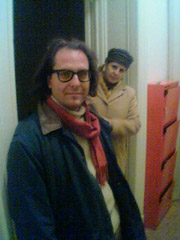
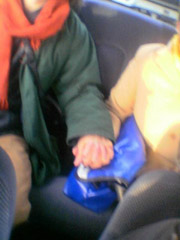
Pictures by Joerg Bloem and Katja Grubitzsch (from a phone that takes really good digital pictures--these are about 1/3 of the full resolution)
Smart Dust=Smart Home Nets
Scott sent me a link to a story on the public trials of the DARPA "Smart Dust" project that's been floating around for the last four years.
This is the key idea: "By self-organizing into a sensor network, smart dust would filter raw data for relevance before relaying only the important findings to central command."
In other words, it's a bunch of generic sensor modules that link to form--ant-colony-like--a single sensory entity that uses heurists about data goodness to extract knowledge from a lot of randomly collected data. I see several interesting things here:
- Self-organization (Using TinyOS)
- Small sensors (what's important to sense? how do you sense it?)
- Relevance filtering (how do you pull knowledge out? How do you know what's important?)
The dystopian possibilities are obvious and ominous, but I think that interesting output is possible for home networks without it becoming Demon Seed.
A photogeoblog sketch
After last years' ETech and CHI conferences, where location-based information seemed to appear more frequently then before, I started thinking a lot about location-based data and how it will be a big part of the way that we use smart electronic devices on a daily basis. Location is one of the bridges between the data world and our lives--where we are makes a difference to the kind of information we want. There are several different kind of location identification technologies available (cell phone location and GPS) and there are now companies such as Landmat starting to exploit it, so it's going to be here soon (Landmat already did a Time Out City Guide to London that uses your cell phone location to give you customized information).
So I decided to try my hand at thinking about what location-associated service I would like and came up with the location-aware camera idea. I looked at cameras that would do this, but at the time they were all too expensive (they've since come down in price), so I decided to do a quick sketch of how a vacation with a location-aware camera could be documented. I did this over the summer with a digital camera and a bunch of maps I had picked up on a trip Molly and I took, but didn't get to posting it until just now. Here it is.
The context for the trip would be provided by a dynamic map like Bryan Boyer's Indy Junior:
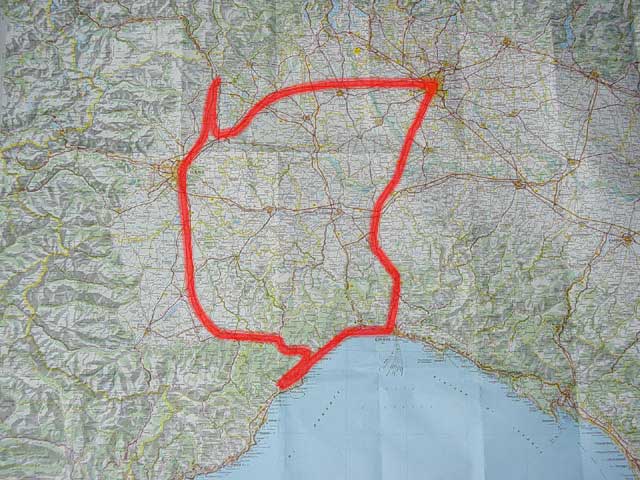
And the rest of the trip would be documented with photographs matched to maps matched to day and time information. This would allow readers to follow the trip as it happened, to see when and where cool things were and to provide some of the feel of the flow of the trip. Services like GeoSnapper do part of this, but not the whole thing (presumably because only some of the information exists and it's tough input it manually).
6/13/03 4:47PM
|
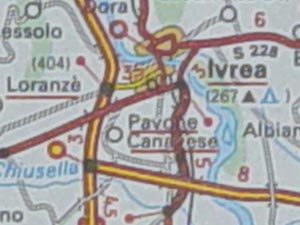 |
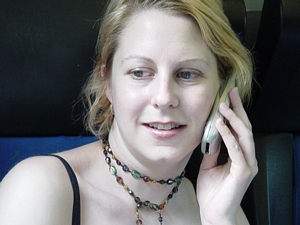 |
| 4:47PM |  |
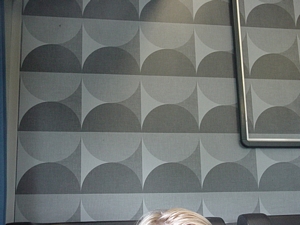 |
| 5:13PM | 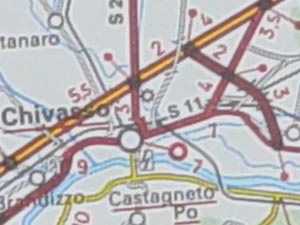 |
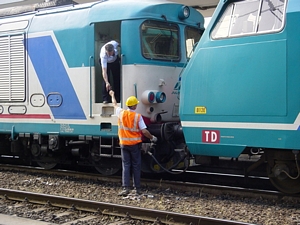 |
| 5:25PM | 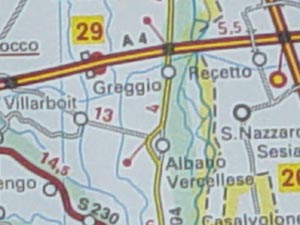 |
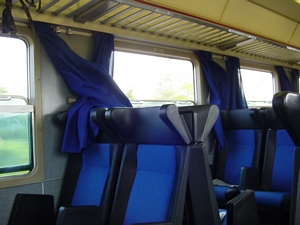 |
| 5:31PM |  |
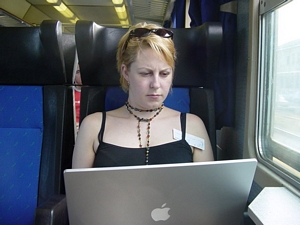 |
| 5:34PM |  |
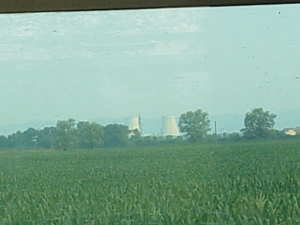 |
| 6:49PM | 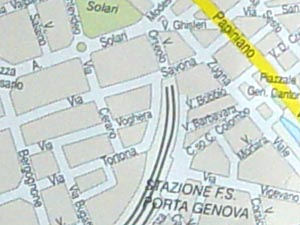 |
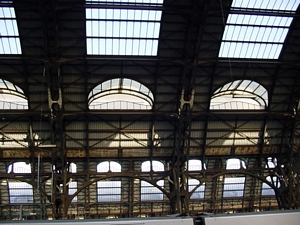 |
| 8:11PM | 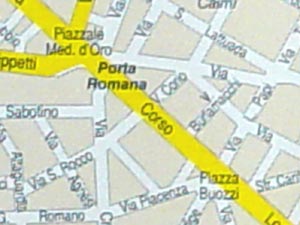 |
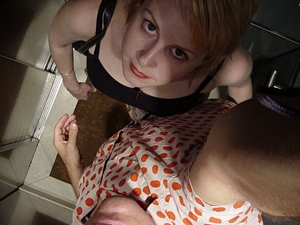 |
| 8:46PM | 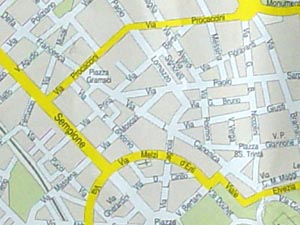 |
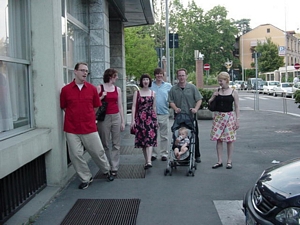 |
| 9:16PM |  |
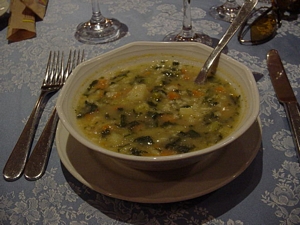 |
6/14/03 10:25AM |
 |
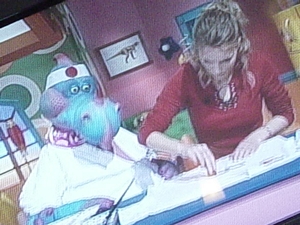 |
| 10:57AM | 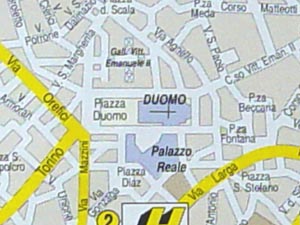 |
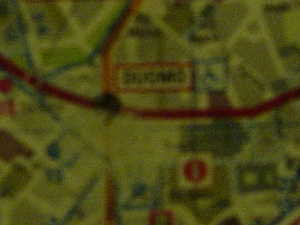 |
| 1:20PM | 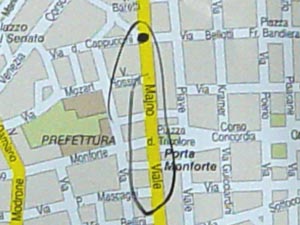 |
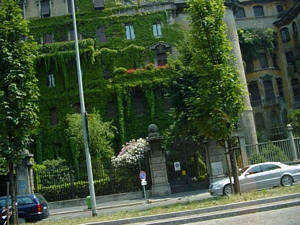 |
| 2:16PM | 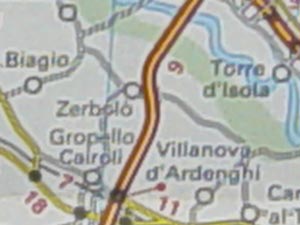 |
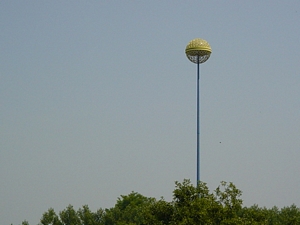 |
| 2:17PM |  |
 |
| 7:19PM | 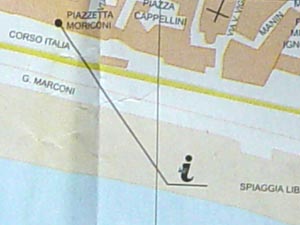 |
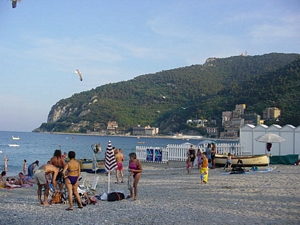 |
| 8:15PM |  |
 |
| 10:05PM | 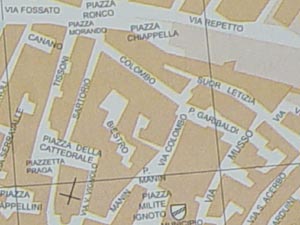 |
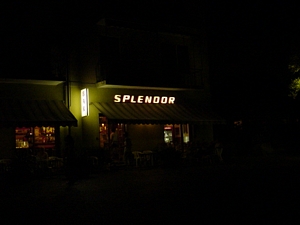 |
| 10:13PM | 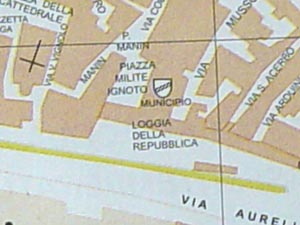 |
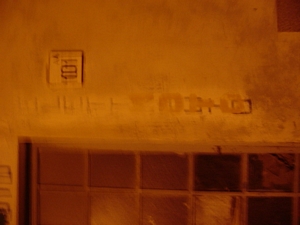 |
| 11:33PM |  |
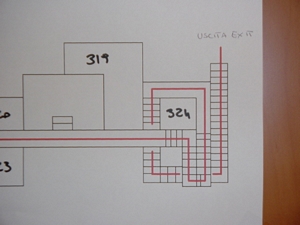 |
6/15/03 10:19AM |
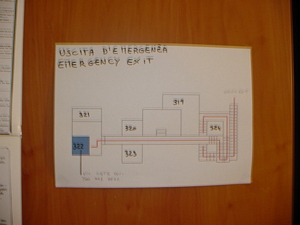 |
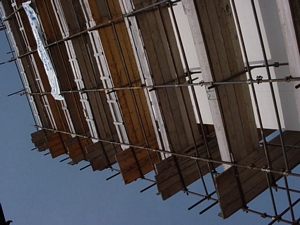 |
| 10:19AM |  |
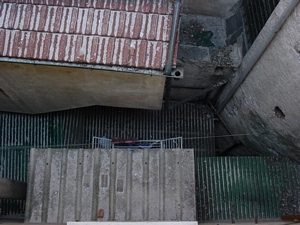 |
| 11:13AM |  |
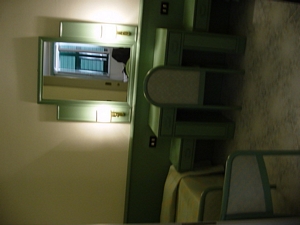 |
| 12:49AM |  |
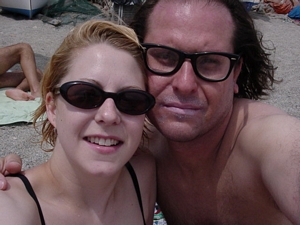 |
| 3:25PM |  |
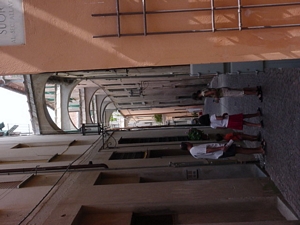 |
| 4:05PM | 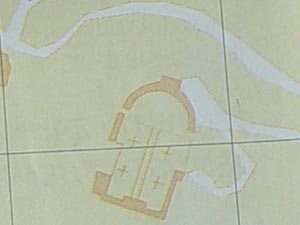 |
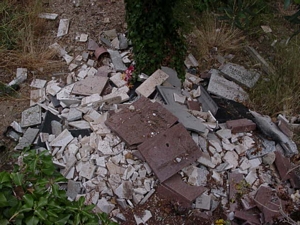 |
| 5:00PM | 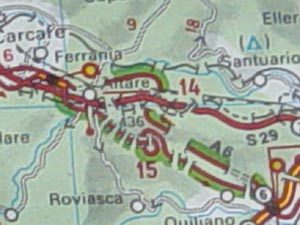 |
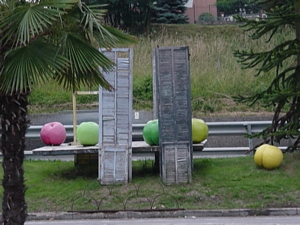 |
| 7:16PM | 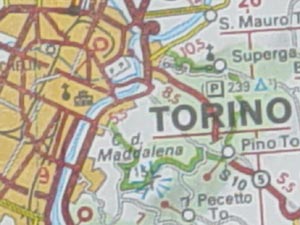 |
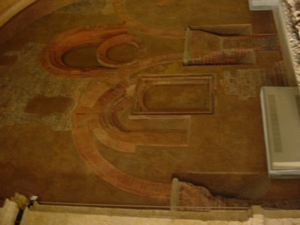 |
Rem Koolhaas' Content
Molly and I went to Berlin for the weekend, to visit friends and get out of Ivrea (go go discount European airlines!) and went to the Rem Koolhaas show at the Neue Nationalgalerie (a link in English that doesn't have pictures, but a nice video).
It's a fascinating and frustrating show because it really embodies the whole Koolhaas art/architecture/design/infographic "more is more" esthetic. There's so much and it's so chaotic that it's overwhelming. It looks like a a giant installation piece, a business school conference poster session and a garage sale. There's no central story, and the threads never seem to be tied together, but it's a profound statement about design, nevertheless. He is inspired by the Russian Constructivist arcitects of the 1920s, who saw it as their responsibility to not just build buildings, but rebuild society. Soviet philosophy notwithstanding, Koolhaas interprets this as meaning that design needs to take the context of the design into account, that understanding the context is as important as the design itself (presumably, that's why it's called "Content," because he sees architecture as significantly more than just the creation of containers).
At least that's how I see it, since that's how I think about design. Granted, his presentation still boggles me, since it tends to represent the complexity of life with complexity of presentation, but it's a start. It's also intensely inspirational, and it showed me how incredibly valuable even simple images can be when communicating an idea, which is somehting I'm going to be trying to emulate.
Oh, and I think that his relationship to is pretty funny. He talks about how much he respects Mies (probably because the Neue Nationalerie is a classic Mies building), but then goes on to try to find every possible way to not be like Mies.
November 21, 2003
Motorcycle Clothing
While shopping in Milan we bumped into a display of motorcycle gear by Tucanourbano, an Italian motorcycle accessories company. They have a line of cute and ridiculous helmet ears that I like, but they also have a line of passenger leg covers/bags which led me to think that there's got to be a market for easily attachable-removable "clothes" for motorcycles. There are lots of fur-coverd motorcycles and scooters at Burning Man every year, so it's eminently doable and--unlike other customization--it's cheap and removable. I bet there's a business in this, somewhere, and someone should start it. Not me, but someone.
Perceptual Bandwidth
I've been very busy here in Ivrea for the last three weeks and should be transferring more stuff from my paper notebook to this one soon. In the interim, I'm still thinking about animism and expectations. At one of the many dinners full of Interaction Design heavyweights I was talking to Andrew Ortony who pointed me to Clifford Nass and Byron Reeves' book, The Media Equation which seems to be about exactly the stuff I'm thinking about. Haven't bought it yet, but read their interesting article, Perceptual Bandwidth (Google cache), which defines a framework by which we can discuss some of the perceptions created by computer-mediated perception. Yeah, that sounds pretty heady, but there are some nice quotes in the paper:
Human-computer interaction is fundamentally social and perceptual in exactly the same ways all other interactions with people and the physical world are social and perceptual. This means the lessons of psychological research about perception can be applied to media with few considerations for the special status of technology.
New media engage old brains, and to the extent that new interactions mimic real life, then the principles that explain perception in real life can be applied straightforwardly to computers and other media.
In other words, Baudrillard was right, even though it took him a convoluted 170 pages to say it. Damn him.
November 04, 2003
Smart Furniture: Beds
Arrived in Ivrea a couple of days ago to visit Molly. Inspired by Elizabeth Goodman and Mariojn Misilim's Sensing Beds paper and Dunne and Raby's Design Noir book, I started thinking of smart beds. Beds seem like a pretty logical platform for incorporating intelligence into furniture. Beds are large, stationary, near electrical outlets and as Goodman and Misilim point out, used every day, pretty much at the same time. They're primarily used for three purposes: sleeping, sex and recuperation from illness.
I decided to brainstorm on the question: "How can beds use information from the environment around them to help with sleeping and health?" [Smart beds as sexual aids will be considered at another time] Here's what I came up with:
Sleeping
There appear to be several different techniques for detecting sleep. All require attachments, but maybe there could be a way to detect sleep without needing to wear a strap or skin sensor. If a bed could detect when its occupant(s) were asleep, it could do any number of things:- tell their phones to go directly to voice mail
- tell their doorbell ringer to spit out a message
- tell parents that "all is well" with their kids without having to peek in
- log the times and use that to build the sleeper a profile of their sleep cycle so they could once and for all know how much sleep feels like it's the right amount
- Etc.
Snoring and sleep apnea
There's a whole industry to tackle these problems that could leverage off of smart beds. A bed with a microphone could tell when snoring became louder than a certain threshhold and either wake the snorer or slowly reposition them to a better breathing position. Sleep apnea could be detected/monitored/logged and could trigger actions using technology that already appears to exit.Health
Medicine is where the most technology is currently applied to beds (and bed-like devices like operating tables) and is likely to be where smart beds first appear. There are bed wetting sensors, bed exit alarms that trigger when someone has left their bed and patient positioning technology used to in cancer radiotherapy. (Here's an example of an experimental rig that seems like it could actually be fun to ride). Tying such sensors together with shared information could allow their environment to adapt to the person's condition or needs:- a crib breathing monitor could detect Suddent Infant Death Syndrome
- a heartbeat monitor could monitor a cardiac patient's state
- a breathing sensor could sense an asthmatic's night-time breathing difficulties (asthma often worsens at night)
- Etc.
Room flexibility
How can smart beds make bedrooms into more flexible spaces? Bedrooms are of fairly limited use and although McMansions in the US have more floor space than people know how to use, there are still places where population density is a such that space is at a premium.The key to all these ideas is that the bed mostly serves as the sensor and communicates data to other devices—ideally wirelessly—rather than trying to do everything.
Other Smart Bed Links
- Static Charge Sensitive Bed
- NAPS (Non-Invasive Analysis of Physiological Signals)
- The Bed, a medium for intimate communication